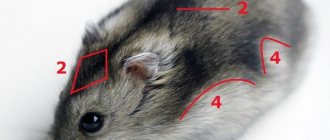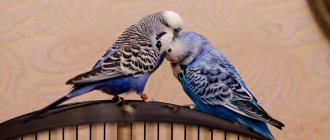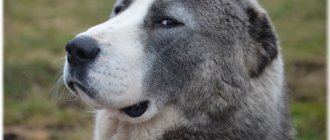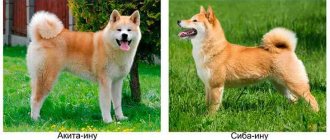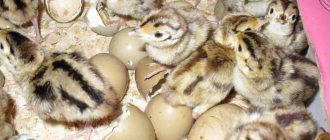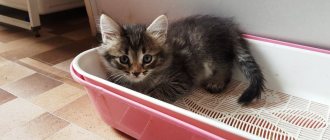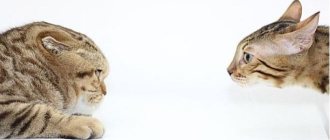The appearance of these two representatives
In appearance, the Campbell's and Djungarian hamsters are very similar to each other.
They differ from all others in their rather small size and do not grow more than ten centimeters in length. They have a rounded head and a short, pointed muzzle. The Djungarian hamster has a white belly
As for colors, these hamsters can have completely different colors. They never change their color, and this indicator is not affected by seasonality.
The main external differences between the Djungarian hamster and the Campbell's are:
- Campbell's ears are very small;
- on the belly of the Djungarian hamster the coat color is white, but the Campbell's belly is gray;
- dzhungarik can change its color in the autumn-winter period;
- Campbell does not have a dark spot on the top of his head;
- Djungarik's wool is predominantly colored in black, gray or dark brown shades, but Campbell's is almost always sandy or amber;
- The Campbell's hamster has a dark stripe on its back.
Among other things, I would also like to note that Campbell's hamsters have richer and more varied colors, so it will be quite easy to distinguish these hamsters knowing such nuances. As for the coat, each hamster also has its own characteristics, which consist in its density. In this case, denser wool is observed in the dzhungarika, so it gathers into shreds much more often.
Eye color is an insignificant indicator of similarities and differences, because almost all Djungarian hamsters do not have red eyes, with the exception of albinos. That is why if, when purchasing a Djungarian hamster, they try to sell you a rodent with red eyes, this can only mean that it is a cross between different breeds, or, in a less likely scenario, a purebred Campbell hamster.
Biological characteristics
If you come to the pet store unprepared, you can easily run into problems when, instead of one type of hamster, they slip you another. It’s even worse if you take one dzhungarik, and along with it they sell you Campbell as a pair. Under no circumstances should these species be crossed. And to avoid such problems, it is worth turning to biological signs.
Both species belong to the rodents and the genus Hairfoot. Both hamsters have approximately the same size - up to 10 centimeters in length, and weigh about 70-80 grams. However, it is believed that the Campbell's hamster is a miniature dwarf hamster; its parameters in the classic form differ slightly to a lesser extent.
Both the dwarf and the Campbell's are primarily nocturnal. Hamsters feed on grain crops and dried seeds, mainly pumpkin seeds.
Hamsters love to hide in holes, so there are always secret places in their house where they climb and where they store food supplies. Animals breed in captivity throughout the year; a female can give birth to up to 10 babies at a time. By the way, Djungarians bear offspring from 20 to 25 days, but Campbells carry offspring from 18 to 22 days.
Meet Campbell's Hamster
Before you get this cute rodent, it is important to know about the peculiarities of its content and character.
Dwarf hamsters are energetic, curious and love their independence.
The peculiarity of the Campbell's hamster is its similarity to the Djungarian hamster.
For a long time, these babies were considered a species of Djungarians. But there are a number of signs by which the breed can be correctly identified.
The hamster got its name in honor of Charles Campbell, a member of the British consular service in China, who in 1904 brought samples of the breed from the Chinese-Russian border.
What does it look like
Outwardly, these cute babies look like Djungarians, like their twin brothers.
The rodent is tiny in size and cute in appearance. These are miniature beauties that you can admire endlessly.
- Weight. An adult weighs no more than 45–50 g.
- Body length. Rodents grow about 7–10 cm in length.
- Tail. Very short - its length is no more than 1.5 cm.
- Head. Round shape with small ears.
- Muzzle. Short, sharp shape.
- Wool length. Long and ragged, sticking up.
- Color. Color options can be varied, but any color of the Campbell's hamster is characterized by reddishness.
- Eyes. Round, most often black, but can also be red.
Important! In captivity, a variety of rodent colors have been bred - from white to black.
Outwardly, these cute babies look like Djungarians, like their twin brothers.
But Campbell's hamster still has a number of characteristic differences:
- the presence of spots on the fur (jungarians do not have them);
- minimum width of the stripe on the back: in dzhungarikas it is wide and can go into the nose or flow into a diamond on the muzzle;
- The color of Campbell's hamsters is predominantly sandy, golden or cream, while Djungarian hamsters are grey, black or brown;
- the presence of red eyes (this does not happen in jungarians);
- the Campbell's hamster has hair that sticks out, while the Djungarian's fur lies flat;
- when viewed from above, our rodent resembles a figure eight, a dzhungarik resembles an egg;
- weakly expressed or completely absent arches at the transition from the back to the stomach; in the dzhungarik they are clearly distinguished.
We suggest you read: Keeping crows at home and everything you need for this
Robm (2) on the head, as well as spots on the fur (2). During the transition from the back to the abdomen, there are weakly defined arches (4).
Lifestyle
These rodents are nocturnal.
At night, they are active, make noise and run around a lot, so it is better to keep them away from bedrooms and children's rooms.
These outwardly cute animals are very aggressive and restive, difficult to tame, and often bite. Campbell's hamsters do not tolerate changes in environment. In new conditions, their aggressiveness may increase.
How long do they live?
The average lifespan of an animal is 2 years.
Did you know? Hamsters are extremely smart. They remember their nickname and can perform several simple tricks.
Range, habitats
In the wild, Campbell's hamster lives in China, Mongolia, Russia (Tuva, Transbaikalia, Buryatia) and Kazakhstan. Inhabits semi-deserts, deserts and steppes.
Rodents dig holes to a depth of 1 meter, equipping them with a nesting chamber, 4–6 entrances and a room for storing seeds. Sometimes it gets lazy and takes over the burrows of small gerbils.
These hairy-legged hamsters have several advantages, thanks to which they are chosen for:
- attractive appearance;
- compact size (no need for a large cage, low food costs);
- no unpleasant odor even with irregular care;
- requires little attention, which is convenient for working people.
But the Campbell's hamster also has negative qualities, due to which the species is considered not tame enough and is recommended for observation from the outside.
Flaws:
- not suitable for keeping in a group;
- not suitable for families with small (under 12 years old) children;
- due to the nocturnal lifestyle, it interferes with the sleep of others;
- does not perceive a change in situation.
Important!
If you do put several animals in a cage, do not leave them unattended for a long time. Campbell's hamsters are capable of fighting until one of the opponents bleeds and even dies.
Cage, filling
For one individual, an aquarium/cage of 0.4 * 0.6 m will do
. The cage should have horizontal bars at intervals of up to 0.5 cm to prevent the rodent from getting out. The cage is placed in a bright, but not drafty place, away from the sun, heating appliances and bedrooms, so as not to hear night noise. Do not place objects near the cage that the hamster can drag inside and chew. Make sure your cat doesn't eat the rodent. Place filler, such as sawdust, at the bottom.
Utensils and accessories that need to be placed in the home:
- feeder - preferably ceramic so that the hamster does not turn it over;
- – automatic is preferable (it cannot be overturned);
- a wheel with a monolithic surface so as not to injure the paws - prevention of physical inactivity and obesity;
- plastic house - here the rodent hides supplies and builds a nest from soft hay (newspapers and rags are excluded: the former contain printing ink, the latter provoke injuries to the limbs).
From time to time the pet is allowed out for walks under supervision. Please note that a hamster living in a group may be attacked by his comrades after a walk, frightened by his new smell.
Diet, feeding regime
The rodent is not ready to starve due to its high metabolism and absorbs approximately 70% of its weight per day. The basis of the diet is cereals. You can buy ready-made grain mixtures or make them at home, combining oats, corn, peas, wheat, seeds (pumpkin/sunflower) and nuts in equal parts.
The menu also includes:
- vegetables, with the exception of cabbage, onions, garlic and tomatoes;
- dried fruits and fruits, except citrus fruits;
- clover, dill, parsley and Olivier lettuce;
- cottage cheese, curdled milk, milk and cheese;
- porridge (semolina, oatmeal, wheat);
- liver, chicken meat and beef bones;
- shoots of apple, cherry and birch.
Most owners do not habituate their rodents to hard food (1-2 times a day), allowing them to have round-the-clock access to food. You just need to remove from time to time the rotten pieces that the hamster hides in different corners of the cage.
Breed diseases
Campbell's hamsters suffer not so much from congenital as acquired diseases, the most common of which are:
- conjunctivitis - often after injuries from hay, sawdust and other foreign fragments;
- glaucoma – the eye (due to high eye pressure) enlarges and bursts, the eyelid grows together. The disease cannot be cured;
- proliferative ileitis - a severe infectious disease, also known as “wet tail”;
- diarrhea - occurs due to errors in feeding, infection and after antibiotics;
- Armstrong's acute serous meningitis is a contagious acute viral infection that affects the central nervous system and brain;
- neoplasms - usually observed in old animals;
- eczema - observed more often in elderly or weakened rodents;
- hair loss - usually caused by mites or fungal infections;
- diabetes is an inherited disease (with increased thirst and frequent urination);
- Polycystic disease is a congenital disease that cannot be cured.
The physiology of rodents differs from the physiology of cats and dogs, so Campbell’s hamsters will be treated by a special doctor - a ratologist.
Care, hygiene
A litter tray for a rodent is not necessary, but a sand bath (glass, plastic or ceramic) is indispensable. Sand should not be collected in the yard - it is recommended to buy sand for chinchillas.
The cage is cleaned once a week. In order not to worry your pet, put some “old” litter with a familiar hamster smell into a clean cage. If the cage needs general cleaning, wash it with baking soda (without household chemicals). Such a radical cleaning can be done once every six months.
Everyone wants a little bundle of happiness to live at home. Unfortunately, not everyone will be able to get a dog or cat. However, there are very cute furry pets that will significantly brighten up your everyday life. Campbell's hamster is a great friend and a fun member of the family. What is special about this breed and how to care for it?
[Hide]
Care and maintenance
In Europe, the Campbell's hamster has long been the most popular pet rodent. In the post-Soviet space, its domestication is still treated with caution.
But in vain, because care for this rodent is minimal, and you can watch its cute games endlessly.
Housing requirements
For the miniature size of these pets, a cage measuring 40x60 cm is quite suitable. Equip it with horizontal bars so that the rodent can climb on them.
Pay attention to the peculiarity of dwarf rodents to slip between the bars of the cage, so a cage with frequent bars or a glass aquarium is best suited for a Campbell's hamster.
As a filler, you can use sawdust or any other filler from a pet store.
To avoid unpleasant odors, clean the cage at least once a week. Your pet should have constant access to fresh food and water.
When choosing a feeder, give preference to heavy materials - stone or ceramics. This way the rodent will not knock over food, clogging the cage. The drinking bowl should be anatomical, the water should be changed daily.
Take care not only of the basic needs of your little friend, but also of his comfort.
Equip the cage with a plastic house (the hamster will quickly ruin a wooden house with its sharp teeth). The animal will equip a nest in it, where it will sleep and store its supplies.
In addition to the house, the hamster needs a running wheel, which will reduce the risk of obesity and increase its lifespan. The wheel must be large, always with a solid surface, to avoid damage to the paws.
It is not necessary to place a toilet tray in the corner of the cage.
It is better to replace it with a sand bath, which can be purchased at a veterinary pharmacy or pet store. The hamster will be happy to spend his time there. And don’t forget about the chalk stone, which is vital for the rodent to grind down its teeth.
Did you know? Hamsters are born with teeth. This is a rather rare phenomenon in the animal world.
This breed of rodent should be kept alone. They do not tolerate neighbors even of their own kind. The result of keeping Campbell hamsters together can be constant conflicts, fights and injury. Hamsters will fight for their territory until only one remains.
The health, appearance and activity of a hamster depend entirely on its diet, which must be balanced and varied.
The rodent should eat fresh seasonal fruits, dried fruits and vegetables every day, and constantly receive grain mixtures and greens. Your pet will benefit most from the familiar dill and parsley, as well as dandelion leaves and sprouted wheat. Campbell's hamster can be given pumpkin, zucchini, cucumbers, carrots, potatoes and corn, apples, bananas, raisins, watermelon, and strawberries.
We invite you to read: Detailed description of the cat food production process
The rodent will be happy to feast on animal proteins - special food insects (they can be purchased at a pet store), boiled fish, chicken and low-fat cottage cheese.
The reserves that your pet makes indicate that the rodent is malnourished. There are a number of foods prohibited for hamsters:
- tomatoes;
- cabbage;
- citrus;
- kiwi;
- onion and garlic;
- peanuts, almonds and pine nuts;
- persimmon;
- salty, spicy, smoked and fried;
- food from the human table.
In order for your pet to feel comfortable in the house, he needs to purchase a cage and this condition is mandatory regardless of the breed of the rodent. The cage sizes for both the dwarf and the Campbell's can be exactly the same, since these rodents grow to the same size.
Both of these rodents prefer to be kept alone, and if several individuals are housed at once, this can lead to serious consequences. Both animals are distinguished by strict cleanliness and are able to take care of themselves; the only thing the owner should do is keep his cage clean.
The difference between a Campbell's hamster and a Djungarian hamster is that the former is very suspicious of changes in surroundings and is best not allowed out for walks, but Djungarian hamsters are happy to run around the house.
Campbell's hamster may show signs of aggression and even bite its owner
Both hamsters are intolerant of chemical cleaners, so toothpaste or baking soda should be your preferred choice for cleaning the rodent's cage.
It is much easier to tame a dwarf hamster compared to a Campbell, since the latter, when in direct contact with a person, can show signs of aggression and even bite their owner, so it is not recommended to handle them. With all this, giving preference to these pets, one should not forget that all hamsters are distinguished by their character, which can be both docile and aggressive, completely regardless of what breed it is.
Hamster nutrition
A proper and balanced diet is the key to a healthy animal. The food mixture must fully meet the pet's requirements and contain the required amount of proteins, fats and carbohydrates. In almost every pet store you can find specialized food for small breed hamsters, which will be enriched with a vitamin complex.
But this does not mean that Campbell can be fed with formula alone. For the full growth and development of the animal, cereals, bread, milk and even cottage cheese are needed. You should pamper your pet depending on the season. Boiled poultry and fish meat is very beneficial for a hamster, and the boiled liver gives the animal’s fur a beautiful shimmer.
Representatives of this breed love to have a good sleep, so the animals are most often in a state of peaceful sleep during daylight hours. The animal should be fed no more than twice a day, and try to remove any leftover food. It is important to ensure that your hamster does not gain excess weight - this can have a detrimental effect on your pet's health.
The animal should always have fresh water in its cage. Preferably with the addition of vitamin C. On average, a hamster drinks about 10 ml of liquid per day. The drinking bowl must be stable.
Purchase rules and price
The price for one Campbell hamster ranges from 2 to 5 dollars per individual. It is important to purchase a rodent from nurseries or from reputable breeders. Don't take risks and don't buy a hamster that is too young or too old.
Important! The cage with the hamster should be located in a well-lit place, but not in direct sunlight.
The optimal age of the animal is from 3 weeks to 3 months. After purchasing a pet, be sure to show it to the veterinarian, especially if the hamster was purchased for children.
When buying a rodent, pay attention to its gender - males are not as aggressive and are much easier to tame than females.
When choosing a pet, pay attention to the following points:
- The coat of a healthy rodent should be without bald patches, clean, dry and shiny;
- the hamster's eyes should shine and have no signs of souring;
- the nose and anus should be clean, without traces of discharge.
Reproduction
Once your Campbell's hamster gets used to its new home, it will be ready to breed, but it is still recommended that mating occurs between March and September. This is explained, first of all, by the fact that in winter these rodents do not show the necessary activity. After mating and fertilization, pregnancy in Campbell Hamsters lasts about twenty days, after which about eight babies can be born, but there are exceptions.
After birth, the babies are blind and naked; hair on these rodents begins to appear only on the fifth day after birth, and after two weeks the hamsters are completely ready for independent life.
Djungarians must be mated when they are at least five months old.
As for Djungarian hamsters, it is recommended to mate the female at the age of at least five months, the duration of pregnancy is almost exactly the same as for Campbell and is about twenty days. After birth, Djungarian hamsters are ready for independent living within one month. The only difference between these two breeds is that a female dzhungarika can generally bring from three to six cubs in one litter.
We suggest you read: Mekong Bobtail breed description – Drugdoma
Among other things, pregnancy has a negative impact on the female’s body, regardless of her breed. During this period, she is very depleted and as a result, her life expectancy is reduced.
These hamsters breed well in captivity. This period usually lasts from March to September. Animals are especially active in this regard in the first year of life. Males become sexually mature at 6–8 weeks, females at 8–12 weeks. During one season, a female can give birth to 3–4 litters, in which there are from 6 to 10 cubs. Pregnancy in a rodent lasts 15–21 days.
Until the female begins to take the babies out of the nest, you should not pick them up. She may simply not accept children who smell like humans.
The cubs become independent very quickly - on the 5th day they begin to become covered with hair, and on the 10th day the hamsters’ eyes open. Keeping Campbell's hamsters at home is not much different from caring for other rodents. Carefully choose an animal, study all the issues related to its maintenance, and, most importantly, take care of your pet and love it. And he will definitely reciprocate your feelings.
Description of the breed
A Campbell's hamster has an average lifespan of 18 to 24 months when kept indoors. The average size of the breed is from 7 to 10 cm. They become sexually mature within 5 weeks, their litter usually consists of 4 to 6 cubs. Hamsters have an average gestation period of 18-21 days.
Another difference from Syrian hamsters is that Campbell's dwarf hamsters are very social and like to live in colonies. If hamsters are introduced at a young enough age, up to 8 weeks, they will coexist comfortably in a male or mixed group. However, it is recommended to keep them separately, males and females. Campbell's hamsters are crepuscular animals, so they are most active at dusk and dawn.
Like all other hamsters, Campbell's hamsters are rodents, and as such they must chew regularly to prevent overgrowth of their incisors and possible health problems.
Campbell is a member of the dwarf hamster family. Outwardly, it is very similar to the Djungarian, so many people ask the question: “How to distinguish the Djungarian from the Campbell's hamster?”
In fact, this species has its own distinctive features. Campbell has small ears and golden brown fur. Djungarian hamsters are lighter in color. A characteristic feature of representatives of both breeds is a dark stripe that runs along the back along the body.
Campbell's hamster does not have hair on the soles of its feet. Another specific feature of this pet is the relative difficulty of keeping it, or rather, taming it. The fact is that the Campbell hamster is a very biting breed. Therefore, it is impossible to keep several representatives of the rodent family in one cage.
Despite the fact that Campbell's hamsters are similar to their Djungarian relatives, they have a number of features, after familiarizing themselves with which breeders can easily distinguish representatives of both breeds. The color of Campbell's hamsters is dominated by golden, amber and brown tones, while those of Djungarian hamsters are light. Campbell has miniature ears and no fur on the soles.
But there is also a common feature with dzhungarikas - a dark stripe on the back and a light belly. In the dwarf hamster, the stripe widens closer to the head, forming a diamond; in the Campbell's hamster, it is even from beginning to end. The animal's fur grows at a certain angle, and because of this feature it looks ragged and sticking out. For more information about the differences between these breeds, read the article about the differences between a Campbell's hamster and a dwarf hamster.
We suggest you read: What can you feed a degu?
The most popular color is agouti: sandy-gray, white or milky belly, dark stripe on the back. But you can also find plain sand-colored Campbell's hamsters without a stripe on the back and a light belly, but with white spots on the coat and a light chin. This color is called self. Many colors have been artificially bred - tortoiseshell, satin, silver. There are black and white (albino) representatives of the breed on sale.
Distinctive features
Unique features of the breed:
- body length up to 10 cm;
- the weight of an adult Campbell hamster is up to 50 grams;
- the color can be of any color, but it is characterized by reddishness;
- rounded muzzle, tapering at the end;
- the eyes are round, often black, but can also be red;
- tail length up to 14 mm;
- There are four toes on the front paws and five on the hind paws.
If you decide to keep several representatives of the breed in one cage, do not leave them unattended for a long time, otherwise fights cannot be avoided. “Campbells” are stubborn and can fight until there is blood and death. Prone to obesity and diseases such as tumors, polycystic disease, diabetes.
Before you buy a buddy with a restive disposition, find out how long Campbell's hamsters live, because the loss of a little pet can cause a lot of stress, especially for children. If the child is of such an age that he is able to care for a pet, buy him a Campbell hamster, just warn him that he cannot be called a long-liver - the animal lives on average 1-2 years. With good care it can live 2-3 years, but this is rare. Pets do not live up to 4 years, either in the wild or at home.
Most breeders agree - the Campbell's hamster loves to bite. This is a feature of the breed. But biting is not only a way of protecting and showing aggression, but also a reaction to the following factors that should be avoided:
- you scared the baby with a sudden movement or scream;
- you didn’t wash your hands before handling the rodent, and they smell like something edible;
- they did not install a mineral stone in the cage for grinding down teeth;
- They did not pick up the animal correctly - under no circumstances should you pick it up by the top, only from below or from the side. It's even better to place your hand next to your pet so that he can climb into it himself.
If the hamster does bite, treat the bite site with peroxide, do not shout at the animal and remember that the bites of these animals are not dangerous. You won't be able to make friends by yelling at a hamster, much less hitting him.
Lifestyle
If we compare the lifestyle of the Djungarian and Campbell's hamster, then both of these species lead a predominantly crepuscular or nocturnal lifestyle. Moreover, these hamsters differ from others in that they do not hibernate.
These breeds are nocturnal
In nature, both of these breeds live in burrows that are at least one meter in length and are equipped with mainly five entrances. In some cases, these hamsters can settle in gerbil burrows. Since representatives of these species are clean rodents, their burrows are always in order, otherwise the animal leaves it and builds a new home for itself.
Adults prefer to live alone, but despite this, if hamsters are placed in the same cage from birth, then throughout their lives they can get along well and get along with each other.
It is strictly forbidden to share adult hamsters with each other, as this almost always leads to hostility between them. The only way out in this situation is to equip the cage with a removable partition. This way, the hamsters will first be able to get used to each other without harm to their health.
Features of behavior in the wild
Representatives of this breed are settlers of steppes and semi-deserts. In their natural habitat, they dig small burrows with several entrances, usually to a shallow depth. The basis of the diet consists of plant seeds and their green parts. By the way, hamsters’ homes have special compartments for storing supplies. The Campbell's hamster, whose reproduction in the wild occurs in approximately the same way as in domestic conditions, is most active at night.
Interesting fact: representatives of this breed do not hibernate. Animals have learned to regulate their body temperature. Their night life is very varied, so they have to be especially active, due to which their body temperature rises to 40 degrees. Long before sunrise, the animals go to take a nap. Sleep helps the hamster's body cool down to 20 degrees. It is this lifestyle that helps you rationally spend your energy and save energy.
Campbell's hamsters do not live long. The average life expectancy in the wild is about two years. At home, animals can live twice as long.
